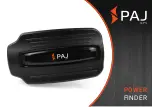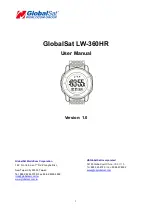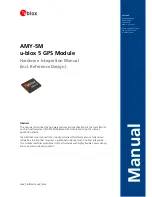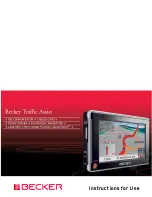
Section 3:
Operation
Revision 1.0a
44
© 2006 Intuicom, Inc.
3.3 End-to-End Integration using Intuicom Nav-Link
In an operational Navigator IIm wireless network, third party applications make TCP socket
connections to Intuicom Nav-Link server in order to communicate with remote serial
devices.
After the Navigator IIm units, Master transceiver and any repeaters are configured, Intuicom
Nav-Link server must be configured accordingly. Nav-Link is configured to communicate
with the Master transceiver via a serial cable at a specified baud rate and to map remote serial
ports to TCP ports. Nav-Link is configured by modifying the Nav-Link config.xml file.
Refer to the
Nav-Link User Guide
for detailed information about configuring Nav-Link.
A configuration might be as straight forward as a vehicle tracking application making a
single TCP socket connection to a socket streaming GPS position data from all remote
Navigator IIm units in a network.
Another application might involve a seismic data collection application that makes a dozen
parallel TCP connection to sockets dedicated to individual remote seismometers streaming
seismic data.
Communicator II
Master
Communicator II
Repeater
Navigator IIm
Slave #2
Navigator IIm
Slave #3
Navigator IIm
Slave #1
Serial
Device A
Serial
Device B
Serial
Device C
Serial
Device D
Serial
Device E
Serial
Device F
PC running
Intuicom
Nav-Link
Software
RS232
IP Network
Communications with remote serial ports made
available via TCP sockets (example):
10001 <-> Serial Device A
10002 <-> Serial Device B
10003 <-> GPS #1
10011 <-> Serial Device C
10012 <-> Serial Device D
10013 <-> GPS #2
10021 <-> Serial Device E
10022 <-> Serial Device F
10023 <-> GPS #3
11000 --> GPS Messages from Units #1, #2, #3...
Intuicom
Wireless
Network
Solution
Wireless
Serial
Serial
TCP/IP
GPS
GPS
GPS
Figure 3-2: Example End-to-End network with Nav-Link






































